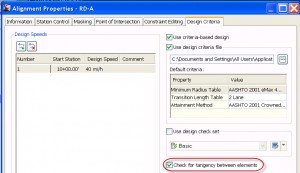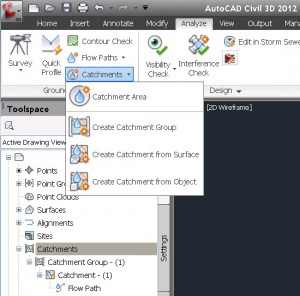Civil 3D 2012 – Top 5 New Features
The release of Civil 3D 2012 is coming just over the horizon in mid-April, and there are some exciting things to come. This is the Civil 3D update that I’ve been looking forward to for years. It’s been very exciting to watch Civil 3D evolve from it’s young developmental stages to what we have now, a mature civil design and surveying product that is infinitely more powerful than Land Desktop ever was. Here are my top 5 favorite new features.
Styles and Settings Import
The first tool that we had seen coming down the pipes for a long time were the new Style and Settings Management tools. For the last couple years, we’ve had an increasing amount of access to these parts of Civil 3D in the application programming interface (API). You might have used these in our CMI Tools. Autodesk had a nice framework that made it easy to plug-in and grab these styles. However, the new built in-tools are really superior. They allow you to copy, replace, purge, and find styles in use all with a graphical interface. If you’ve ever built a Civil 3D Template, you know that some of tasks become nearly impossible without a lot of manual hunting or custom programming.
Label Rotation
This has been a feature everyone has been waiting a long time for. Traditionally, we’ve used workarounds with generic labels or multiple label styles to get around this restriction, but now individual labels can be rotated independently.
One Section Cuts Multiple Corridor Baselines
This is an amazing new feature that might be too late for that project that you’ve already completed but perfect for the next one. Often times, you’ll have adjacent alignments and design corridors for both alignments. Each of these would be a separate baseline, meaning that you could not show both of them in a cross section. This is now no longer the case. If there’s one reason that you should be able to convince the project manager to upgrade and do the project in Civil 3D 2012, this might be it.
Catchment Areas
Determining time of concentration has always been a laborious process. I would often start with the Catchment Area command (which would create polyines) and then move onto using the Water Drop command to fine tune the polyine areas. Many PEdits and BPolys later, I would end up with suitable areas to begin calculating the time of concentrations from. The new version gives us catchment groups, catchment objects and flow paths. It feels like it’s been a while since I’ve seen a group of new object types in Civil 3D that I can see an immediate benefit from.
Check for Tangency
There is now an option to specify whether Civil 3D will check for tangency. This is a very simple tool, but one that can really help if you are not using constraint based design. I think that Civil 3D has always assumed that everyone uses the nice floating and free options in their alignments for everything, which would force everything to be tangent. As you probably know, this is not the case, many alignments are defined from polylines. With these alignments, it would be nice to know if there are any non-tangent segments. Maybe you would draw a lot of little extra objects to check, but there’s always a chance you could miss something. Now, there is an entry in the design criteria that lets you do that.

